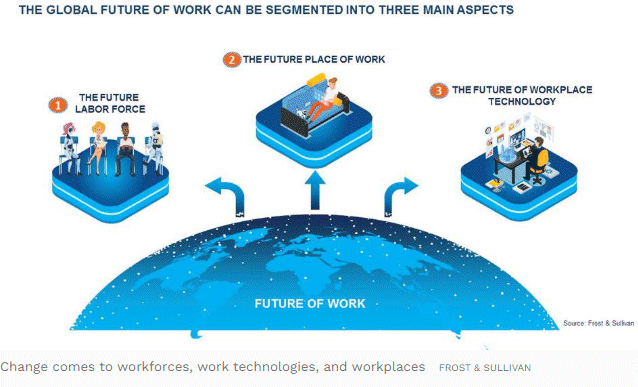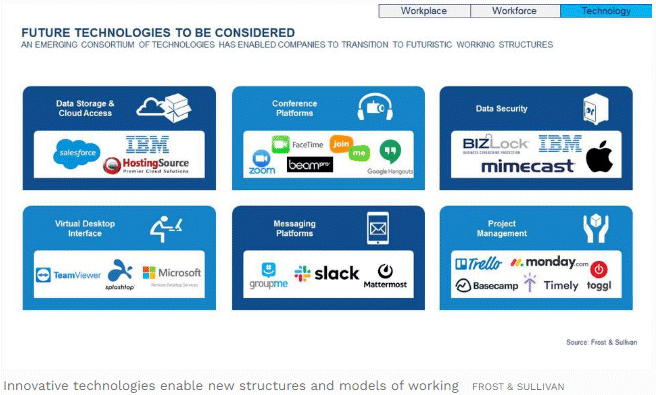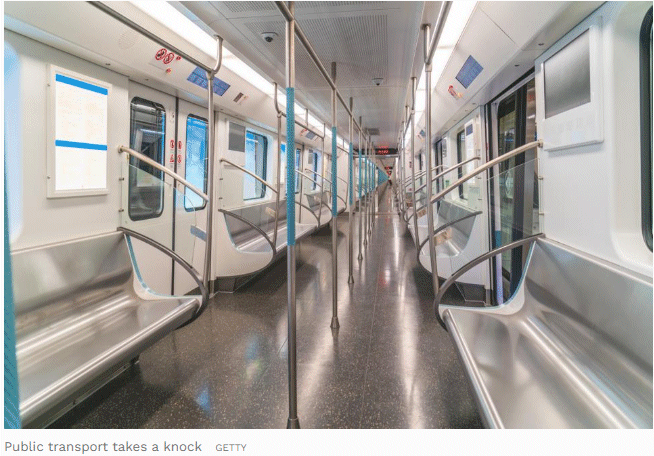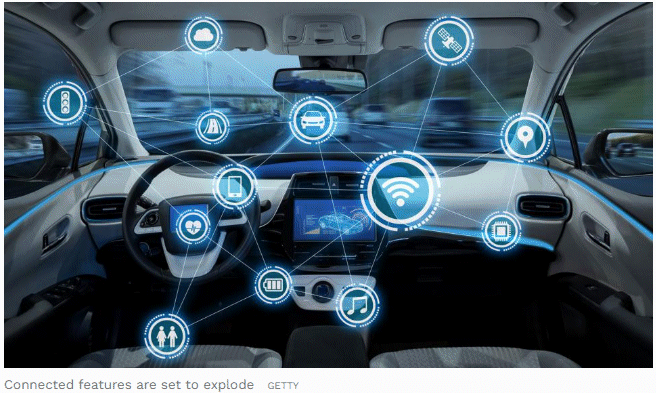In the four months since we’ve had our lives upturned by COVID, I, along with millions of others, have had to adapt to radically transformed work practices, patterns, and philosophies. As the future of work takes shape gradually and organically, what is most exciting is that it will most definitely not be business-as-usual.
Instead of the daily office commute and 9-7 (yes, I keep longer hours!) corporate drone routine, I think we will be looking at an ecosystem that supports greater flexibility and personalization. Mobile infrastructure, technologies, and devices will seamlessly knit together smart work centers and remote workplaces. By most accounts, the results will be improved flexibility, enhanced real-time collaboration, better employee engagement, higher productivity, and increased revenues. New work dynamics will also have profound implications for mobility and for the future of the automotive industry.
Setting The Scene
I like to think of the future of work in terms of the change that will play out across three main areas: workforces, work technologies, and workplaces.

In the future, workforces will be mobile, dispersed and easily accessible, thanks to purpose-built mobile infrastructure and smart work technology solutions. Meanwhile, rapid technological advances will highlight the need for new skill sets, requiring employees to constantly upskill and reskill. This, in turn, will place the onus on human resource planning to ensure that employees learn and acquire new competencies and, more generally, that they successfully adjust to change.
Work technologies will be pivotal to reimagined work structures. The future will be marked by the convergence of technologies like artificial intelligence, robotics, and data analytics. Buzzwords like the ‘digital enterprise’ and the ‘virtual workspace’ will become commonplace as digital tools allow work to be done remotely and virtually.
Advanced workplace technologies will support networked, agile, open and transparent frameworks. Another aspect of technology-driven change will be evident in mobile robots replacing the human element and several processes being automated.
As workforces and technologies transform, the obvious question is what the office of the future will look like? It’s a given, of course, that it will be radically different from all our current conceptions. Imagine a future workplace that comprises smart work centers and modular structures characterized by pop-up networked hubs. Prepare for newer business models like space-on-demand, coworking, cocreating and crowdsourcing. Be sure to invest in an ergonomic chair as telepresence & telecommuting becomes standard, backed by new connectivity technologies, video conferencing services, and social communication tools.
The Emergence Of New Employment Models
Such transitions are already underway and are giving rise to new employment models. For instance, there’s the concept of dispersed networks, much like what Citibank has, where organizations rely on full-time, remote employees with flexible working arrangements. Another model, like that of Upwork, is that of freelance brokering, which uses a third party to connect skilled labor/knowledge workers with one-time contracts.
A third employment model, of the kind practiced by Uber UBER -3.1%, is what I refer to as un”collared”. Here, a third party assembles a collective of workers to perform a function, usually an offline service. And, finally, there’s micro tasking – think Amazon AMZN +0.7%’s Mechanical Turk – which is literally that, an employment model where a third party uses remote, unskilled labor to break down a complex job into smaller, more manageable tasks.
Feeling The Impact
As I will testify from personal experience, new styles and structures of working enabled by smart technology solutions have offered two very important gifts: flexibility and personalization. Freed from the tyranny of straight 8+ hour days in office, I find my work from home (WFH) style far more productive and resource efficient. There are savings; in my case, no more splurges on Brooks Brothers suits (alas!) and fuel costs. In the case of the company, there are prospective savings on fixed costs associated with the reduced need for office space and infrastructure. Finally, there’s that essential and elusive intangible – work-life balance. Here, I am happy to report that I am better able to schedule work around family time (and am enjoying the thrill of letting my beard grow out!).
Needless to say, the impact of these new work models will be a little more complex on the larger scale. The most obvious long-term impact will be felt in the reduced need for office space. Indeed, trends indicate that overall office space will shrink by a massive 17% by the year end.
For instance, Cisco’s connected workspace project envisions square footage/employee ratios to contract by 40%. It’s also symptomatic of the ongoing change that the ratio of desks to knowledge workers will have decreased by 15% over the 10-year period from 2010-2020, even as the number of mobile devices per knowledge worker will have climbed from 5.18 in 2010 to 6 in 2020.
As someone who tracks developments in the auto sector and, in mobility, more generally, I have also been piqued about the impact of new work concepts on the mobility industry. We have already seen a drastic reduction in mobility—in terms of commuting, work-related travel and general travel requirements—and, by extension, of travel allowances. The simple inference here is that minimal to no time spent on commuting means more hours freed up for work, while cuts in travel allowance mean lower variable expenses for employers. In other words, higher productivity and revenue generation.
However, it’s not that simple. The future of work will have multiple impacts on mobility stakeholders.
Emerging Work Trends Will Affect The Mobility Industry
It stands to reason that continued WFH policies and a population shift from densely populated urban agglomerations to more suburban locations in the aftermath of the pandemic will mean an increase in car ownership. This trend is already visible in the U.S. where suburban areas typically tend to be underserved in terms of mobility alternatives, making personal vehicle ownership a necessity.
What has also become increasingly clear is that public transportation will take a knock from the pandemic. Social distancing and the higher risks associated with contracting the virus in public transportation modes will result in a move towards private transport, which promises greater control over safety and hygiene.
I also believe that lower commuting miles will inform a change in the role and function of a car, shifting its primary use from workplace commuting to secondary functions like evening and weekend travel. Simultaneously, I foresee new vehicle segments emerging to accommodate these new requirements. For instance, hatchbacks are likely to be a popular choice as a second family car.
If Vroom’s recent IPO is anything to go by, I expect the used car market to experience a strong resurgence. Used car sales will boom as consumers prioritize value-for-money purchases. At the same time, fleet markets will face a shakeup as car allowances drop and corporates give up their fleets. Such de-fleeting will improve the choice and volumes of used cars available to consumers.
With the bubble having burst on shared mobility, I anticipate new car ownership models to grow. Commercial and private leases, and subscription services for cars will pick up momentum. COVID will launch Gen Z as a distinct customer segment much earlier than their Gen Y predecessors. Car companies, especially Chinese automakers, will design vehicles targeted at this population segment.
With safety and hygiene firmly on the agenda, I expect two wheeler sales to grow in developing markets, particularly in Asia. Concurrently, enabled by new connectivity technologies, cars will increasingly become points of health, wellness and wellbeing. The explosion of connectivity features in cars will shift the focus from “horse power” to computing power”, while compelling automakers to take a relook at the digital architecture of their cars.
Truly, as a Nobel Literature laureate once prophetically sang, “the times they are a changing.”
Article was originally published on Forbes.com







